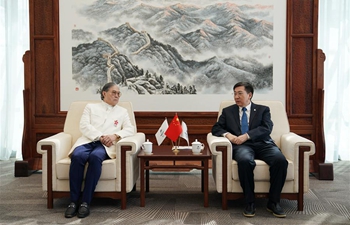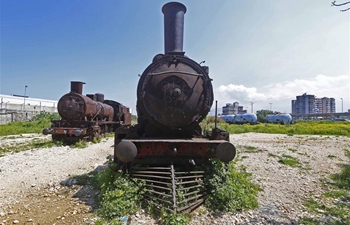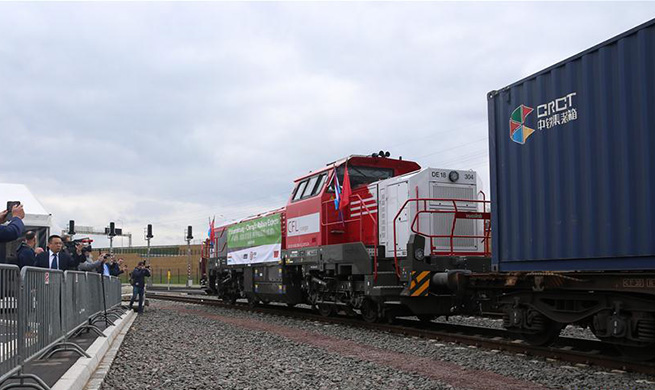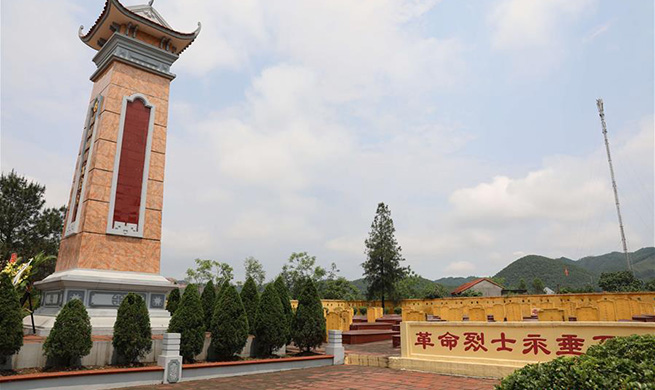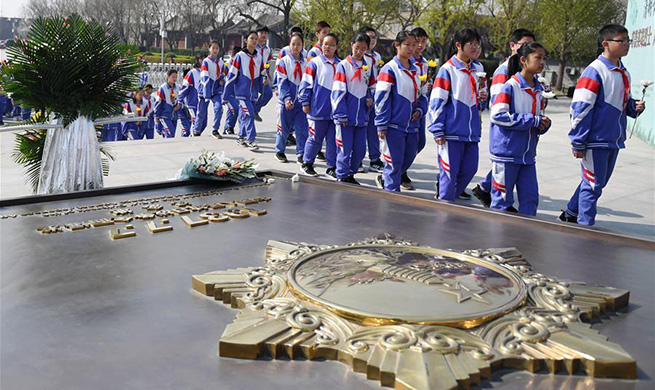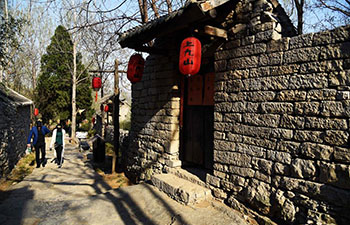by Zhao Yan
ANAPU, Brazil, April 4 (Xinhua) -- Chinese-made power towers designed to leave a smaller footprint on the environment have been going up in Anapu, a town in northern Brazil's Para state.
The 105-meter-high transmission towers, at least 25 meters higher on average than conventional towers, are part of the efforts by Chinese company State Grid Brazil Holding (SGBH) to safeguard local forests as it builds an ultra-high-voltage (UHV) power line in the region.
According to Leandro Moraes, a Brazilian environmental engineer hired by State Grid to assess the project's environmental impact, a standard tower requires clearing a path of 114 meters wide, whereas the higher towers reduce the number to just 10 meters.
Other towers along the power line will be taller still, reaching 130 meters in height in neighboring Tocantins state, for example.
"This effort significantly increases the cost of the project, but it is worthy of protecting the Earth's green lung, the Amazon jungle," said Yang Guangliang, assistant manager of transmission lines at Xingu Rio Transmissora de Energia, S.A. (XRTE), an affiliate of SGBH.
XRTE is in charge of laying 2,543 km of the line, which will transmit energy from the central Belo Monte hydroelectric plant in Para to Rio de Janeiro, on Brazil's southeast coast.
The power line will be the second 800-kilowatt UHV line that State Grid builds in Brazil. The first, already in operation, transmits energy to two other southeastern states: Sao Paulo and Minas Gerais.
The 800 kw UHV line is a technological innovation developed by China to reduce the amount of power that is lost as electricity moves along the transmission line. The case in Brazil will be the longest such line in the world.
A project of this magnitude is not an easy task. Just accessing the positions of the towers requires traveling over rugged roads or trails, often aboard all-terrain vehicles. The work is further complicated as great care goes into preserving local flora and fauna.
Moraes works in a team of environmental consultants to ensure the project meets guidelines issued by the Brazilian Institute of Environment and Renewable Natural Resources (IBAMA).
The team might also recommend modifying the line's route to avoid disturbing an indigenous community in the area, in keeping with norms established by the National Indian Foundation (FUNAI).
Moraes and his colleagues visited nearby local families to present the project, the different construction stages involved and the benefits of the power line.
Once the project is completed, the team will continue to maintain contact with the locals for nearly two years to monitor conditions and perform the follow up actions as required.
Para, where the line starts, is home to scattered communities of small Indian tribes. With that in mind, the company decided to modify the original route, which had been approved by the government, adding several kilometers to the line to buffer nearby villages.
Li Junfeng, assistant director of environment at SGBH, said the company takes a comprehensive approach to environmental issues.
"For us, environmental matters mean not just protection, but also sustainable development for the local residents. That's why we undertake social projects all long the line," said Li.
In Tocantins, SGBH established a fruit juice plant in a poor community and took other steps that have made a difference in the lives of local residents.
"In Para, we helped to build a poultry farm in a community, and donated modern medical equipment for the local hospitals in other small towns," Li said.
The company has contributed significantly to conservation efforts over the years in Brazil.
"We have studied 936 kinds of animals, saved 60 types of plants in danger of extinction, reforested more than 1,100 hectares by planting trees, and carried out archaeological work at 4,492 sites, discovering and protecting more than 710 ruins and caves," said Li.
Soon, the power line project will supply homes and businesses in some of Brazil's key cities with clean energy. Meanwhile, it is spurring the regional economy by generating 16,000 jobs, developing Brazil's electric equipment industry, and building 1,970 km of highways and 350 bridges.







